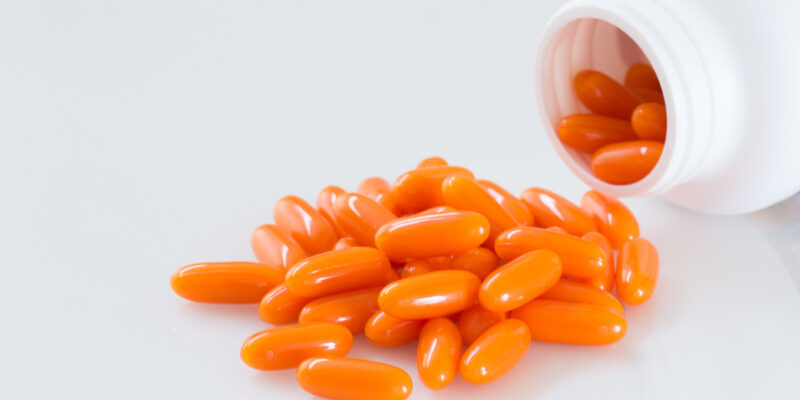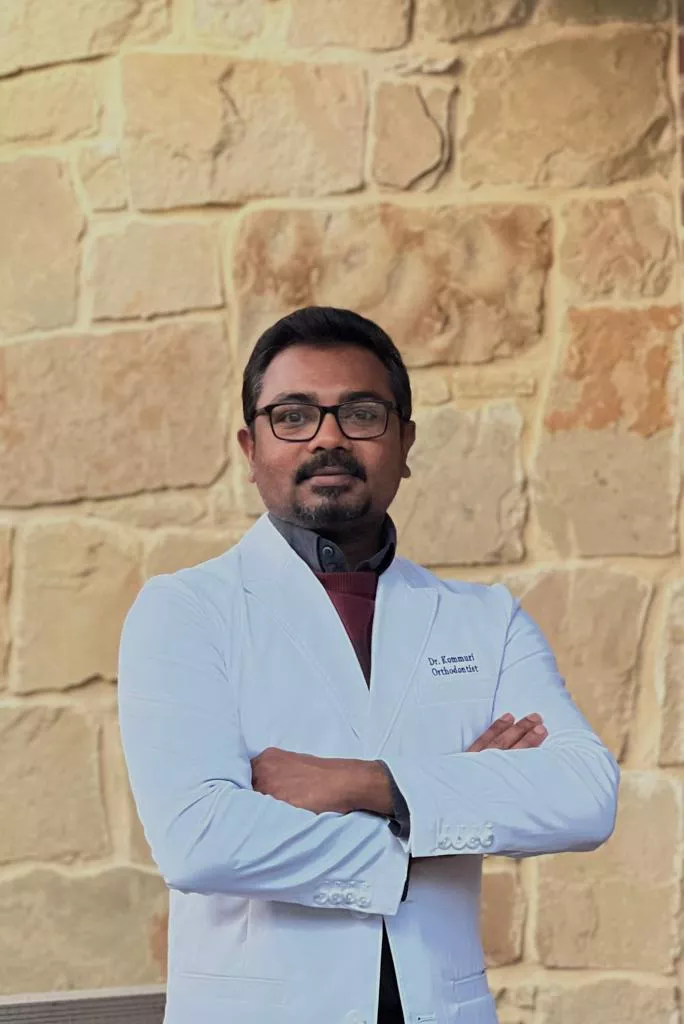Keywords Exodontia, tooth extraction socket healing, statin drug
Introduction
Tooth extraction is a procedure that is routinely performed by dentists throughout the world. The procedure is frequently employed in treating conditions like caries related dental pathologies (1-3), periodontal conditions, orthodontic/therapeutic needs, prosthetic treatments, pediatric dentistry considerations and endodontic complications, to name a few (4, 5).
Although the procedure is commonly performed, there are some complications associated with the post operative site. One significant, and the almost inevitable post operative complication is the loss (resorption) of alveolar bone in the extraction site. Most of these resorptive changes have been reported to occur within the first three months of tooth extraction, although the dimensional changes can continue to take place up to one year (6). Also, some soft tissue changes are noted in the region where tooth extraction is performed (7). During healing of the extraction socket, these factors play a critical role in determining the quality of residual alveolar bone in and around the socket. This is important in maintaining the overall health of the periodontium; and in conditions where dental implants are planned to replace missing teeth in edentulous spaces. While placing dental implants an adequate amount of alveolar bone and sufficient volume of soft tissue at the site of operation is paramount for successful treatment outcomes (8).
Historically, several studies have been performed to accomplish adequate and/or enhance socket healing following tooth extraction. Towards these efforts, various studies have been performed to investigate the competence of materials such as:
- platelet rich plasma (PRP),
- autografts,
- allografts,
- xenografts, and other options such as
- alloplastic materials (9-13).
However, owing to drawbacks such as costs involved, donor site morbidity, risk of disease transmission, lack of osteo-inductive capacity of graft materials and patient preference in refusing tissue transfers from animals or other humans to name a few, a gold standard or a “go-to” material is yet to be established.
Statin drugs
In recent times, one such material that has shown promise in this regard is the class of statin drugs. Otherwise known as Hydroxymethylglutaryl-coenzyme A (HMG CoA) reductase inhibitors, statin drugs regulate cholesterol biosynthesis, and additionally also demonstrate pleotropic properties such as anti-inflammatory and antioxidant effects (14). Statin drugs lower cholesterol. Examples include:
They include:
- Atorvastatin
- Fluvastatin
- Lovastatin
- Pitavastatin
- Pravastatin
- Rosuvastatin
- Simvastatin
These drugs have been widely used in the medical world for managing conditions like hyperlipidemia, hypercholesterolemia, reducing risk of myocardial infarction and stroke conditions.
Evidence from existing research studies strongly indicates that administration of stain drugs increases the expression of bone morphogenic protein (BMP)-2 mRNA with simultaneous promotion in bone formation (15-18). It has also been identified that statins stimulate bone formation through the expression of vascular endothelial growth factor (VEGF) causing angiogenesis and differentiation of mesenchymal cells into bone forming cells (19). Statins also play a role in upregulation of gene expression of other extracellular matrix proteins to accelerate new bone formation, while downregulating the gene expression for collagenase-1 and collagenase-3 (20).
Evidence from literature (animal studies)
Statins have demonstrated commendable potential in preservation and new bone formation in tooth extraction sockets. In some experimental animal studies (21-23) statin was delivered topically in the tooth extraction socket and an investigations were performed to observe local bone preservation, healing, Osseo-integrative and Osseo-inductive properties. The study sites were compared with study subjects/sites that did not receive statin in tooth extraction sockets. The primary parameters these studies have evaluated ranged between estimating difference in residual ridge height and width, gingival and bone healing, and regeneration; calibrating mRNA expression of growth factors, inflammatory response, and bone turnover; assessing neo-vascularization and epithelial continuity. These studies report that upon local statin administration, tooth extraction sockets demonstrated :
- enhanced bone repair and regeneration
- increased new bone formation
- maintenance in the height and width of residual alveolar ridge
- upregulated mRNA expression of growth factors
- enhanced neo-vascularization
- lowered the degree of inflammation and
- reduced alveolar bone loss.
It is noteworthy to identify that statin administration in the vicinity of dental implant (23) showed increased Osseo-integration; a property crucial for the success of dental implant related restorations. Furthermore, some studies (22, 23) observed that local statin administration can lower chances of developing pathological conditions like medication related osteonecrosis of jaw (MRONJ) like-lesion (by aiding in tissue healing and new bone formation); lower the amount of necrotic bone, new bone formation and closure of epithelial tissue in the site of medication related osteonecrosis of jaw (MRONJ) like-lesion, respectively.
Evidence from literature (clinical/human studies)
Similarly, clinical (human) randomized controlled trials have been performed where tooth extraction sockets with topical statin administration groups/sites are compared with extraction sockets in groups/sites without statin application (18-23). These studies investigated alveolar ridge preservation, bone regeneration and dimensional changes in the alveolar bone, level of soft tissue healing and pain/discomfort perception. Mostly all studies reported a positive influence from the use of statins by enhancing alveolar ridge preservation and bone regeneration; and reducing dimensional changes in the alveolar socket where the tooth was extracted. However, no significant differences were observed in the level of soft tissue healing, and pain/discomfort levels between the statin and control groups/sites. Only one study failed to demonstrate any beneficial effects from statin administration (23).
Summary
This review of animal and human comparative studies resonates with the existing evidence of benefits from local administration of statins in the preservation of bone/alveolar ridge and increased healing of sockets when tooth/teeth are extracted. In addition to a healthy periodontium, this will ensure quality Osseo-integration in patients seeking dental implants. Additionally, some studies have also reported reduced progression of conditions like medication related osteonecrosis of jaw (MRONJ) like-lesion, which further expands the scope and opens new avenues to explore the use of statin drugs in dentistry.
However, one can argue that the available data is inadequate to make safe clinical assumptions. In this regard, larger clinical trials should be undertaken by dental researchers in future studies to reach sound conclusions, and establish appropriate guidelines for using the statin drug in augmenting adequate healing of hard and soft tissues in tooth/teeth extraction site(s).
References
- Lee CY, Chang YY, Shieh TY, Chang CS. Reasons for permanent tooth extractions in Taiwan. Asia Pac J Public Health. 2015;27(2):NP2350-7.
- Richards W, Ameen J, Coll AM, Higgs G. Reasons for tooth extraction in four general dental practices in South Wales. Br Dent J. 2005;198(5):275-8.
- Taiwo AO, Ibikunle AA, Braimah RO, Sulaiman OA, Gbotolorun OM. Tooth extraction: Pattern and etiology from extreme Northwestern Nigeria. Eur J Dent. 2017;11(3):335-9.
- Anyanechi C, Chukwuneke F. Survey of the reasons for dental extraction in eastern Nigeria. Ann Med Health Sci Res. 2012;2(2):129-33.
- Suzuki S, Sugihara N, Kamijo H, Morita M, Kawato T, Tsuneishi M, et al. Reasons for Tooth Extractions in Japan: The Second Nationwide Survey. Int Dent J. 2022;72(3):366-72.
- Schropp L, Wenzel A, Kostopoulos L, Karring T. Bone healing and soft tissue contour changes following single-tooth extraction: a clinical and radiographic 12-month prospective study. Int J Periodontics Restorative Dent. 2003;23(4):313-23.
- Chappuis V, Engel O, Shahim K, Reyes M, Katsaros C, Buser D. Soft Tissue Alterations in Esthetic Postextraction Sites: A 3-Dimensional Analysis. J Dent Res. 2015;94(9 Suppl):187S-93S.
- Nozawa T, Enomoto H, Tsurumaki S, Ito K. Biologic height-width ratio of the buccal supra-implant mucosa. Eur J Esthet Dent. 2006;1(3):208-14.
- Araujo MG, Lindhe J. Socket grafting with the use of autologous bone: an experimental study in the dog. Clin Oral Implants Res. 2011;22(1):9-13.
- Zubillaga G, Von Hagen S, Simon BI, Deasy MJ. Changes in alveolar bone height and width following post-extraction ridge augmentation using a fixed bioabsorbable membrane and demineralized freeze-dried bone osteoinductive graft. J Periodontol. 2003;74(7):965-75.
- Carmagnola D, Adriaens P, Berglundh T. Healing of human extraction sockets filled with Bio-Oss. Clin Oral Implants Res. 2003;14(2):137-43.
- Araujo MG, Lindhe J. Ridge preservation with the use of Bio-Oss collagen: A 6-month study in the dog. Clin Oral Implants Res. 2009;20(5):433-40.
- Lindhe J, Araujo MG, Bufler M, Liljenberg B. Biphasic alloplastic graft used to preserve the dimension of the edentulous ridge: an experimental study in the dog. Clin Oral Implants Res. 2013;24(10):1158-63.
- Davignon J. Beneficial cardiovascular pleiotropic effects of statins. Circulation. 2004;109(23 Suppl 1):III39-43.
- Mundy G, Garrett R, Harris S, Chan J, Chen D, Rossini G, et al. Stimulation of bone formation in vitro and in rodents by statins. Science. 1999;286(5446):1946-9.
- Pasco JA, Kotowicz MA, Henry MJ, Sanders KM, Nicholson GC, Geelong Osteoporosis S. Statin use, bone mineral density, and fracture risk: Geelong Osteoporosis Study. Arch Intern Med. 2002;162(5):537-40.
- Moriyama Y, Ayukawa Y, Ogino Y, Atsuta I, Koyano K. Topical application of statin affects bone healing around implants. Clin Oral Implants Res. 2008;19(6):600-5.
- Jinno Y, Ayukawa Y, Ogino Y, Atsuta I, Tsukiyama Y, Koyano K. Vertical bone augmentation with fluvastatin in an injectable delivery system: a rat study. Clin Oral Implants Res. 2009;20(8):756-60.
- Wong RW, Rabie AB. Early healing pattern of statin-induced osteogenesis. Br J Oral Maxillofac Surg. 2005;43(1):46-50.
- Maeda T, Matsunuma A, Kurahashi I, Yanagawa T, Yoshida H, Horiuchi N. Induction of osteoblast differentiation indices by statins in MC3T3-E1 cells. J Cell Biochem. 2004;92(3):458-71.
- Wu Z, Liu C, Zang G, Sun H. The effect of simvastatin on remodelling of the alveolar bone following tooth extraction. Int J Oral Maxillofac Surg. 2008;37(2):170-6.
- Liu C, Wu Z, Sun Hc. The Effect of Simvastatin on mRNA Expression of Transforming Growth Factor‐β1, Bone Morphogenetic Protein‐2 and Vascular Endothelial Growth Factor in Tooth Extraction Socket. International Journal of Oral Science. 2009;1(2):90-8.
- Mansour G, Al Ashwah A, Koura A. Evaluation of simvastatin grafting around immediate dental implants in dogs. Implant Dent. 2014;23(2):195-9.





















Comments